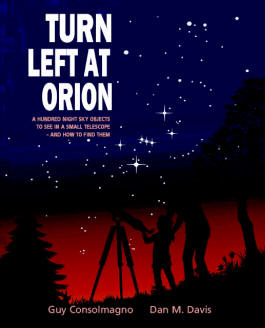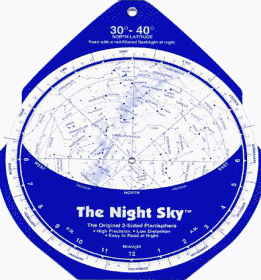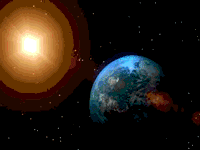International Astronomy Day Is Coming May 24th 2016
|
Date: Saturday, 5/14/2016
|
|
Time: 10:00 AM to 3:00 PM - 7:00 PM to 10:00 PM
|
|
Location: Camino Real Marketplace, 7004 Marketplace Drive, Goleta, CA 93117
(Get Directions)
|
|
The Santa Barbara Astronomical Unit’s premier event for the year is next month, with the celebration of International Astronomy Day on May 10th! This event is a grass roots movement designed to share the joy of astronomy with the general population by “Bringing Astronomy to the People.” Astronomy Day had its beginning here in California in 1973. Doug Berger, then president of the Astronomical Association of Northern California (AANC), decided that rather than trying to entice people to travel long distances to visit observatory open houses, the AANC would set up telescopes at sites more easily accessible. Well, this strategy certainly worked well. Astronomy Day now goes by the name of International Astronomy Day as events not only take place across the United States, but also in numerous countries throughout the planet. On this day, thousands who have never looked through a telescope will have the opportunity to see first-hand what so many amateur and professional astronomers enjoy. This Year: The AU will once again put on an exciting International Astronomy Day at the Camino Real Market Place. With the passing of every year (especially International Year of Astronomy 2009), the AU has been able to put on an even better first-class event than the previous year.Freebies All Day: So, 2016 is no exception. Starting at 10:00 AM on Saturday,May 14th, 2016, the AU will have telescopes available for safe viewing of the sun, as well as a radio telescope, and a jumbo pair of binoculars (to take a close look at our towering mountains). All of these instruments will be staffed by AU members, who will happily explain how each machine works. There will also be a mirror-grinding demonstration booth. At this site, you’ll be able to see the skilled craftsmen of the AU actually making a mirror that will then be used to make a reflecting telescope!The AU will also have over 100 square feet of astro-photography that will simply amaze you. This, along with literature, handouts, astronomy-related clothing for sale, and a telescope and astronomical equipment swap meet (where you may find that one piece of equipment, or telescope, you’ve been looking for) makes for a fun-packed day. But wait, that’s not all. Free Raffle Goodies: The Club’s now famous and much anticipated FREE raffle will be better than ever this year.Our Grand prize is an Orion 4.5" Deluxe Dobsonian Reflector telescope. All you have to do to win one of these prizes, plus many other prizes, is be present when the tickets are drawn. (No AU members, please! This is for the Public!) More Free Activities on the Night of 5/14/2016: To end International Astronomy Day, there will be a telescope clinic, which starts at 7:00 PM. Here, you’ll be able to bring your own telescope and learn from the AU’s experts how to use it. Then, at 8:00 PM, there will be a Star Party, where members of the AU will have a multitude of telescopes that will be available for all participants to enjoy. See you there! |
Grand Prize 4.5" Telescope
|
|
|
Other Great Prizes
 |
A 11x14 print in a 16x20 frame of the Great Andromeda Galaxy. Taken by one of our members Paul Winn The Andromeda galaxy, our Milky Way's closest neighbor, is the most distant object in the sky that you can see with your unaided eye — but only on a clear night from a location with a very dark sky. The galaxy is a beautiful spiral, but one fact you may not be aware of: We’re safe for a few billion years, but Andromeda is headed our way and on a collision course with the Milky Way in about 4 billion years. |
 |
Turn Left at Orion:A Hundred Night Sky Objects to See in a Small Telescope - and How to Find ThemA superb guidebook described in Bookwatch as 'the home astronomer's "bible"', Turn Left at Orion provides all the information beginning amateur astronomers need to observe the Moon, the planets and a whole host of celestial objects. Large format diagrams show these objects exactly as they appear in a small telescope and for each object there is information on the current state of our astronomical knowledge. Revised and updated, this new edition contains a chapter with ten new spreads describing spectacular deep sky objects visible from the southern hemisphere, and tips on observing the upcoming transits of Venus. It also discusses Dobsonian telescopes, with hints on using personal computers and the Internet as aids for planning an observing session. Also new to this edition are redrawn "Guidepost" figures at the beginning of each season chapter that allow readers to visualize a three-dimensional view of the sky's dome; redesigned seasonal object layouts that provide more space for the naked-eye charts; a new spread on double stars near Boötes has been added to Spring, replacing the "Shrinking Double" spread; and a unique "When and Where to Look" table has been added to the last page, among other new features. Unlike many guides to the night sky, this book is specifically written for observers using small telescopes. Clear and easy to use, this fascinating book will appeal to skywatchers of all ages and backgrounds. No previous knowledge of astronomy is needed. |
 |
Every sky watcher needs an easy-to-use planisphere to quickly tell which stars and constellations are above their horizon on any day and time of the year.
How it Works: The Night Sky Planisphere is made up of 2 sections -- an inner rotating dial (white) marked with the days and months of the year, and a fixed outer section (blue) marked with the hours of the day. The dial contains a sky map printed with dark stars on a light background for easy nighttime readability. To use the planisphere simply turn the dial to match the date with the time. The planisphere will then show the stars, constellations, and prominent deep-sky objects that are currently above the horizon as well as the location of the Milky Way. It works for any hour, of any day, of any year! |
| Plus Many Other Prizes |

